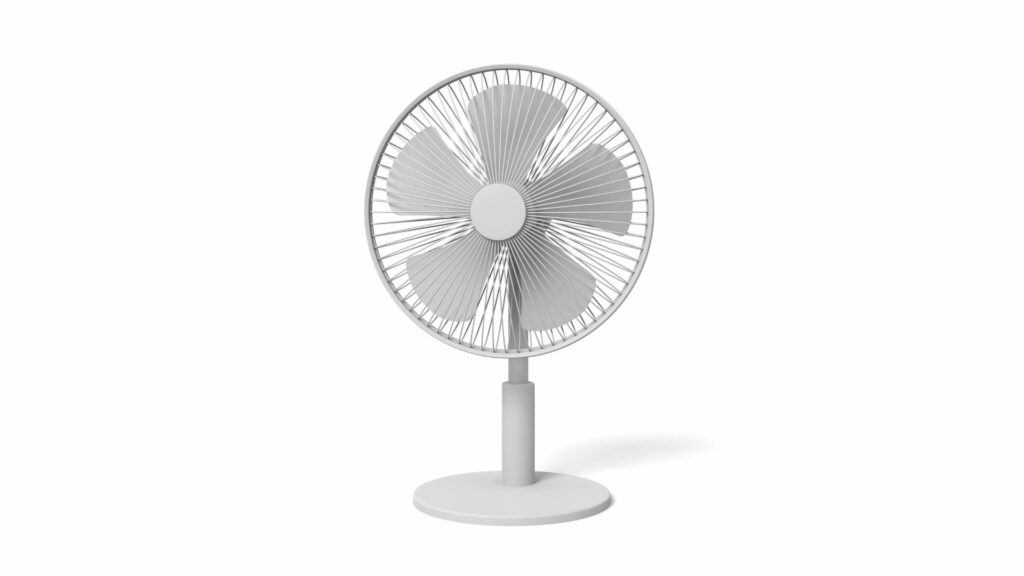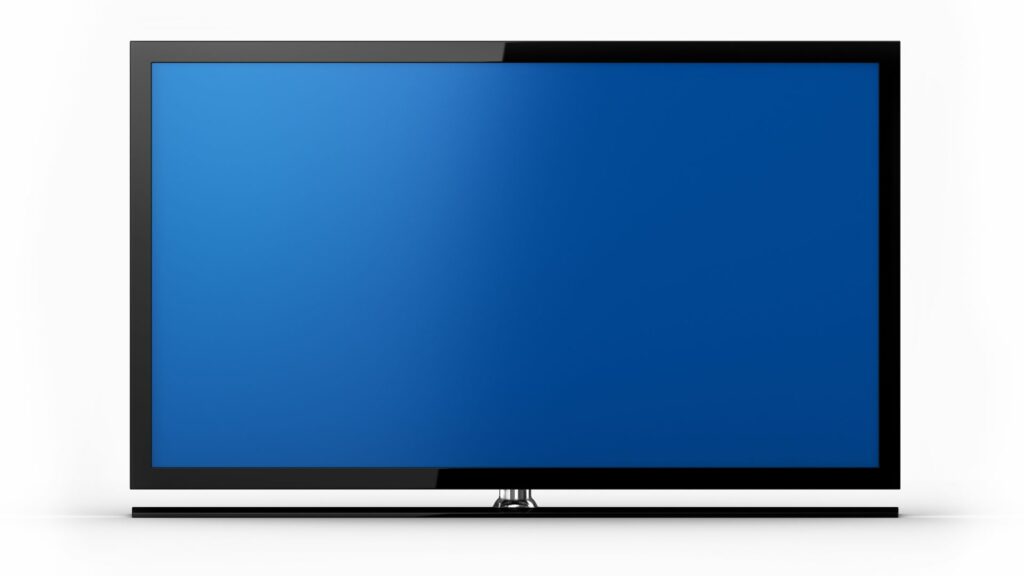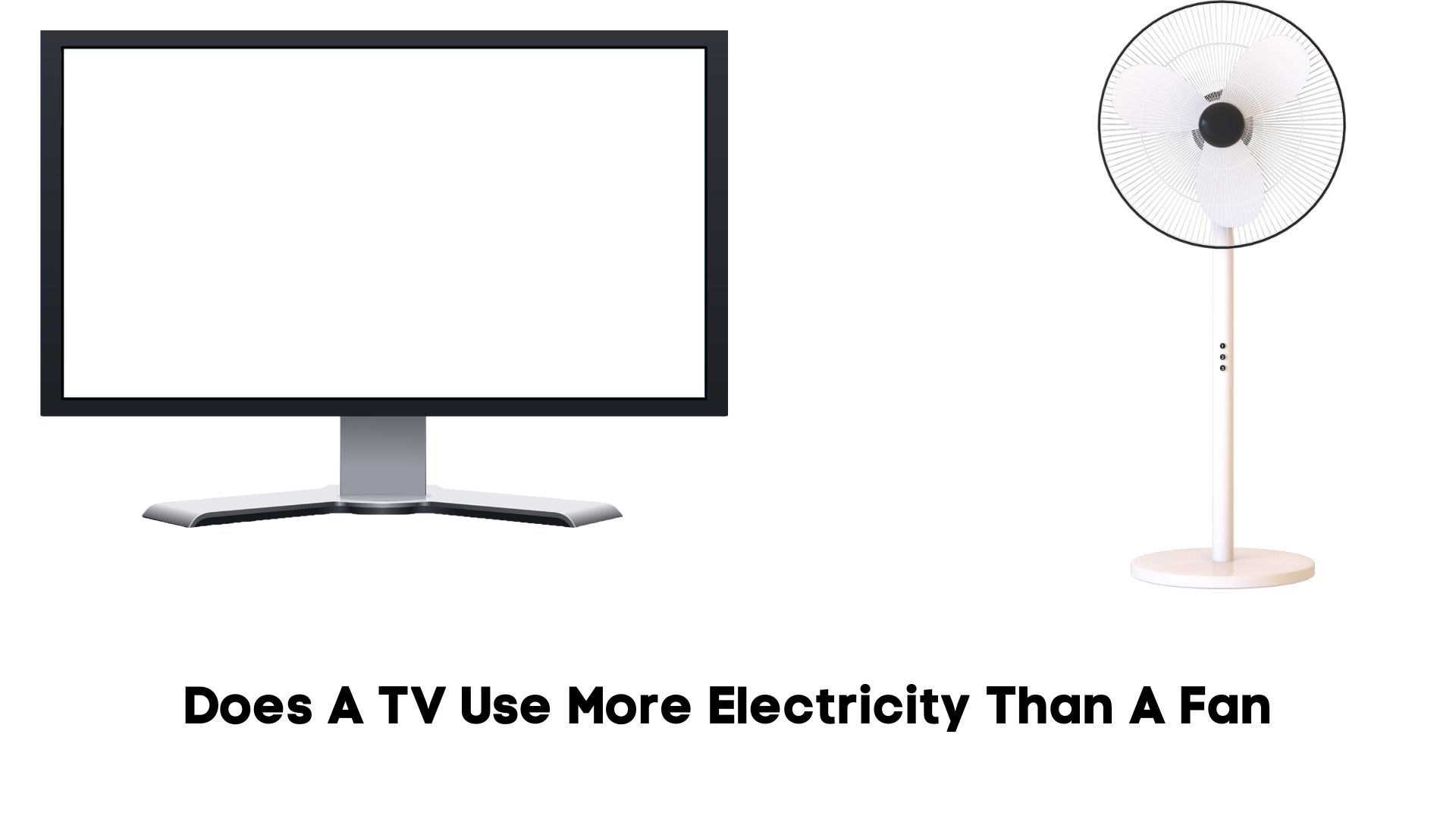Most households have a fan and a TV, especially in developed nations. But which one uses more electricity? The guide below will tell you.
| WATTAGE | Cost Per Hour | Cost Per 24 Hours | Cost Per Month | |
| TV | 170W | $0.0170 | $0.4080 | $12.41 |
| FAN | 40W | $0.0040 | $0.0960 | $2.92 |
The information in the table above makes the following assumptions:
- Your utility provider charges $0.10 per unit.
- The fan uses 40 watts. The TV uses 170 watts.
- The fan and TV are on 24 hours a day, seven days a week.
The U.S. Department of Energy has listed the steps you can use to calculate your fan’s energy consumption:
- Find the fan’s wattage. If you can’t find this information in the manual or on the fan’s label, use an energy monitor. You plug the monitor into the wall outlet and then connect the fan to the monitor.
- Keep a log of the fan’s usage. This allows you to determine the number of hours the fan is on per day.
- Multiply the fan’s wattage by the hours used per day and divide the answer by 1000 to get the kilowatt-hours.
- Multiply the daily kWh by the number of days the fan is used per month. This gives you the fan’s monthly energy consumption.
- Multiply the monthly energy consumption by the cost of each kWh to get the cost of running the fan per month.
Use the steps above to determine the cost of running the TV. Comparing the two will show you whether the fan uses more or less energy than the TV. Keep the following in mind:
1). On the whole, the average fan has a lower wattage than a TV. According to Gadget Review, a fan uses roughly 1 percent of the energy an air conditioner consumes. A traditional AC has a 1000 – 4000W rating, while your ceiling fan is unlikely to exceed 40 watts.
Whole-house fans are a different case because they can use as much as 600 watts, but that still pales in comparison to an air conditioner’s energy consumption. But most people don’t own whole-house fans.
They use ceiling or window fans whose rating falls within the 40 – 100W range. This gives fans an edge over TVs, many of which use 100 or more watts.
2). Even when you find a TV with a lower wattage, these devices are increasing. Households in developing nations that struggle to feed themselves own TVs. Most homes in developed countries have multiple television sets.
Retailers keep selling larger screens with higher watt ratings because consumers keep buying them. Additionally, more people are watching TV than ever before because the market is saturated with riveting entertainment programs.
Statista expects the number of global TV viewers to reach 5.69 billion by 2027. In other words, TVs consume a significant portion of global energy, and those numbers will continue to rise.
3). However, you shouldn’t dismiss fans from this race. A 2022 Lancet Planet Health paper noted that air conditioners are significant drivers of greenhouse gas emissions. For that reason, various private and government organizations have encouraged the public to adopt fans.
Fans create a level of comfort that reduces the need for air conditioners. In other words, you can expect fan usage to grow dramatically. Although, some will say that it’s too late. According to the Applied Research Programme (Energy and Economic Growth), fan sales in India exceed 60 million each year.
One Lawrence Berkeley National Laboratory paper noted that 6 percent of India’s energy in 2000 went to ceiling fans. They expected that figure to hit 9 percent by 2020. So clearly, fans are just as widespread as TVs.
This Department of Mechanical Engineering (Savitribai Phule Pune University) paper has highlighted the fact that fans are always on in some settings. You could say the same thing about lights. However, the lights inside your home will go off at night once you fall asleep.
On the other hand, you have months where the fan stays on all day and all night because of the heat. What does this mean? Even though fans have a lower wattage than TVs, the fans in your home probably use more electricity than the TV, especially if they stay on 24/7.
Factors That Affect Energy Consumption
Fan

1). Fan Size
The size is a critical component. If a 36-inch fan consumes 55 watts, a 52-inch fan will probably use 90 watts or more. As you now know, whole-house fans use hundreds of watts. The larger the fan, the more power it takes to run the device.
People base the size selection on the room. Larger rooms require larger fans. Smaller rooms are the opposite. Therefore, the setting may compel you to purchase a larger fan with a higher watt rating.
2). Speed
A higher speeding setting will consume more electricity. It also generates more heat. Fortunately, modern fans provide multiple speeds. You can limit the energy consumption of a powerful fan by using the lowest speed settings.
3). Usage Patterns For Fan
How frequently do you use the fan? People usually keep the ceiling fan on all the time. They forget to switch it off, which is a mistake because the longer the fan stays on, the more power it uses.
TV

1). Type
Certain TV types are less efficient than others. For instance, plasma TVs have fallen out of favor because they use too much power. Choose between LED and OLEDs. You can also buy LCDs. They are more efficient than plasma.
2). Size
Larger TV screens have a higher energy consumption. Smaller screens are the opposite. They use less electricity.
3). Brightness
Modern TVs have sensors that automatically lower the brightness in response to the ambient light because manufacturers understand that brighter screens use more energy. The easiest way to save energy is to lower a TV’s brightness.
4). Usage
TVs are only problematic if you use them all the time. However, if you only use your TV a few hours a day, it won’t impact your energy bill. Keep the standby mode in mind. Even though standby mode uses very little power, you are better off unplugging the TV when it isn’t in use.
Tips For Reducing Energy Usage And Saving Money On Your Electricity Bill While Using TV And Fan
1). Pay attention to the fan size. Larger fans use more energy. Make sure the fan fits the room’s needs. Don’t waste money on a whole-house fan when you don’t need it.
2). Use smart fans. You can program them with smartphones, creating schedules that turn the fan off during your absence. In other words, you don’t have to worry about forgetting to switch the fan off.
3). Clean the fan. Clogged vents and blades will compromise the fan. It will use more energy to do its work.
4). Turn the fan off when you leave.
5). Ask a technician to fix and maintain a wobbly fan. Fans can loosen over time because of the vibrations. A wobbly fan is not only inefficient but dangerous. You should also lubricate the device, especially when it becomes noisy.
6). Look for energy-efficient fans. These models are easy to spot because their packaging includes a strong energy rating. Make sure you trust the organization that awarded the energy rating.
Related post:

